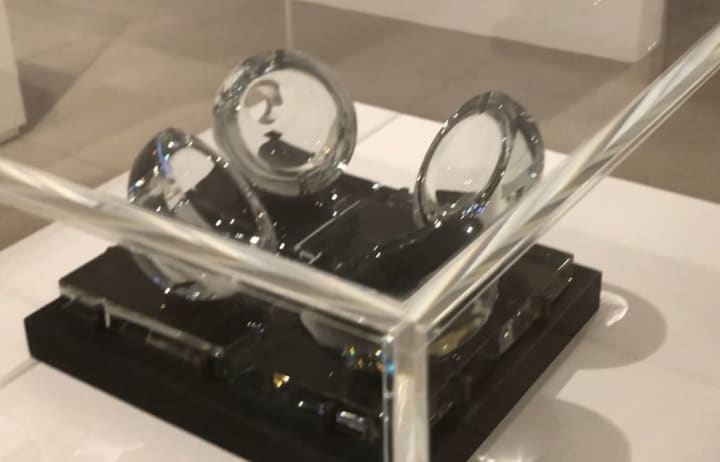The hands
One of the lesser-known works of Barbara Hepworth

If you are looking at this image for the first time, you would not be alone in thinking that the painting represented here is not typical of Barbara Hepworth's work.
This article has been adapted from a piece published earlier this year Barbara Hepworth: Art & Life
Created from life, having been invited to observe an operating theatre team at work, this painting demonstrates not only Hepworth's empathy for the sensitive, life-or-death nature of surgery but, more so here, empathy with the one woman depicted in the scene. Here, Hepworth shows the near angelic presence of the theatre sister, a leading force in a group scene that itself is deeply spiritual in its interpretation. Clearly Hepworth made a close connection with the sister as a woman striving to establish her role in a world of high-profile men.
Barbara Hepworth (1903–1975) was one of the most influential British artists of the 20th century. At the forefront of international modern art, and passionately engaged with what were at the time considered fast-paced changes in science and technology.
Hepworth is known for her organic and very human sculptures and is distinguished not just by being one of the few women in a world of male artists in the 20th Century, but by being a sculptor at a time when prejudice suggested the physical effort involved, if nothing else, made it a specifically male occupation.
I saw The Hands for the first time in February 2023 at a major exhibition of Hepworth's work at Tate St Ives, in Cornwall, south west England. The show brought together some of her signature sculptures with a wide range of other work including painting, drawing, theatrical costume design, along with some archive film footage. One such film showed Hepworth in her studio, wielding her mallet and chisel with an easy and rhythmic grace, demonstrating that sculpting was very much women's work, whatever the art establishment might think. The exhibition trailer linked here will show you what I mean.
Several galleries at the event focused on Hepworth's work referencing celestial bodies. The exhibition blurb explained that repeated circles began to appear in Hepworth’s sculptures and prints following the 1969 lunar landing. These circles symbolising the Sun, Moon and stars and expressing her ‘deep interest in a new sense of poetry in our scientific age’.

Works such as the one shown above derive from Hepworth’s 1962 visit to the Goonhilly Satellite Earth Station newly opened in 1962 in Cornwall. Hepworth recalled her visit (quoting from Tate) ‘I was invited on board the first [satellite dish] when it began to go round, and it was so magical and strange.’
The celestial, spherical form oft repeated in Hepworth’s work was also (according to Tate) a reflection of her interest in Christian Science, drawing the spiritualistic connection between heavenly bodies and the geometric form that underpins much of her work.
Seeing so many of Hepworth's wooden and metal forms protected by plate glass casings and no-go barriers was in some ways frustrating, as such work just cries out to be touched and caressed, experienced in its elemental and physical presence. Clearly necessary, as for so many people to do so would result in serious deterioration of the materials. Oddly, thinking about this as I viewed the works from a distance, I felt a strange tingling in my fingertips, as if I were in reality running them over the delicate surfaces. I don't think I have ever formed such a close empathetic connection to any artist's work.
Finally, something that cannot be seen in its fleeting original form but masterly represented in the curatorial display of some of Hepworth’s theatrical designs. Of particular interest to me was the stage depiction of the god Apollo, rendered in steel rod. The larger-than-life stills of some of the costume designs show how Hepworth’s recurring themes manifested themselves on stage.
To me, this exhibition, and the painting The Hands in particular, was truly moving and by this I mean I was moved to tears at one point. I left the exhibition feeling that I had a much better understanding of this artist's message.
Barbara Hepworth: Art & Life at Tate St Ives, closed on May 1, 2023
About the Creator
Raymond G. Taylor
Author based in Kent, England. A writer of fictional short stories in a wide range of genres, he has been a non-fiction writer since the 1980s. Non-fiction subjects include art, history, technology, business, law, and the human condition.
Enjoyed the story? Support the Creator.
Subscribe for free to receive all their stories in your feed. You could also pledge your support or give them a one-off tip, letting them know you appreciate their work.






Comments (1)
The Hands was a really unique paining choice that stood out from the others. Thanks for introducing her life and work.